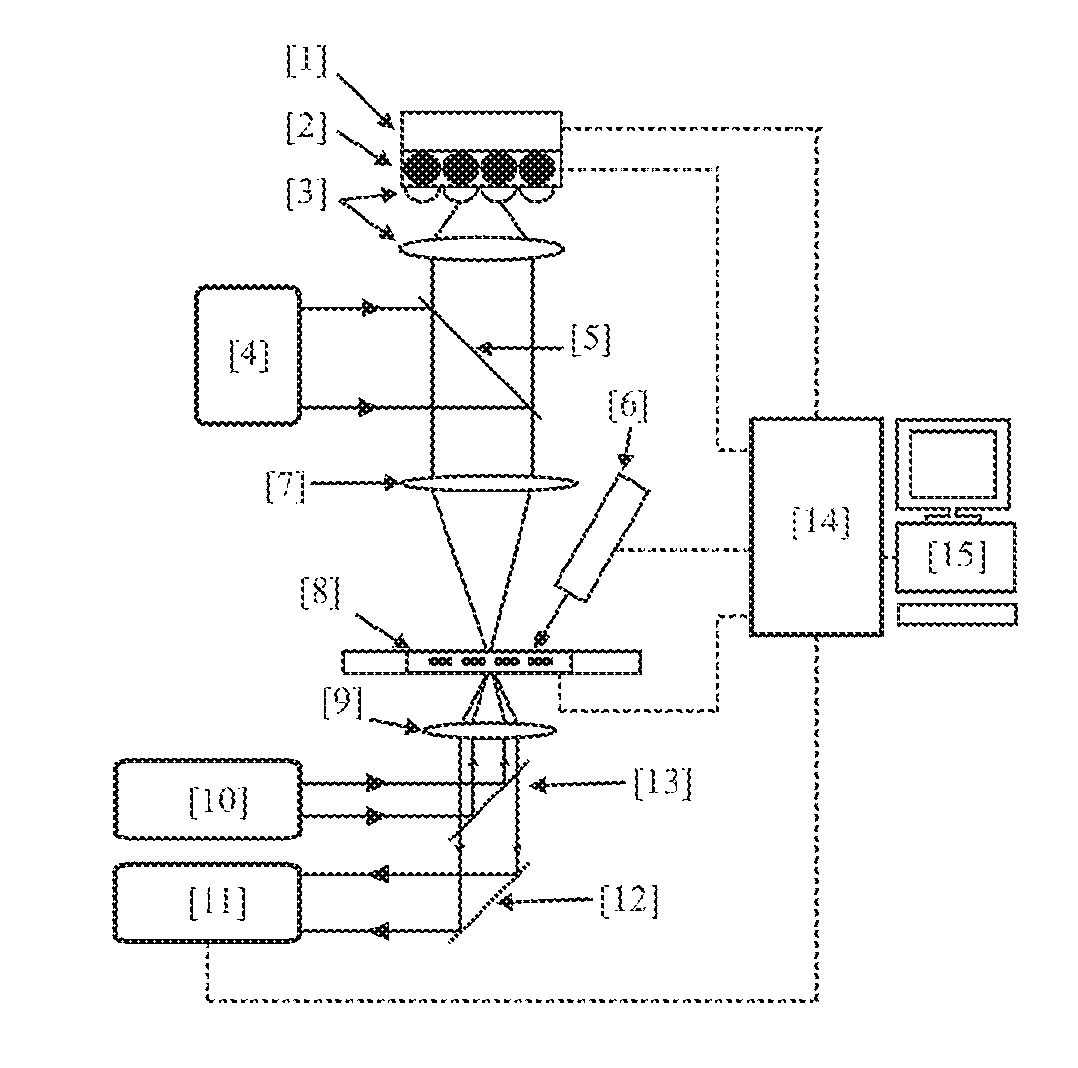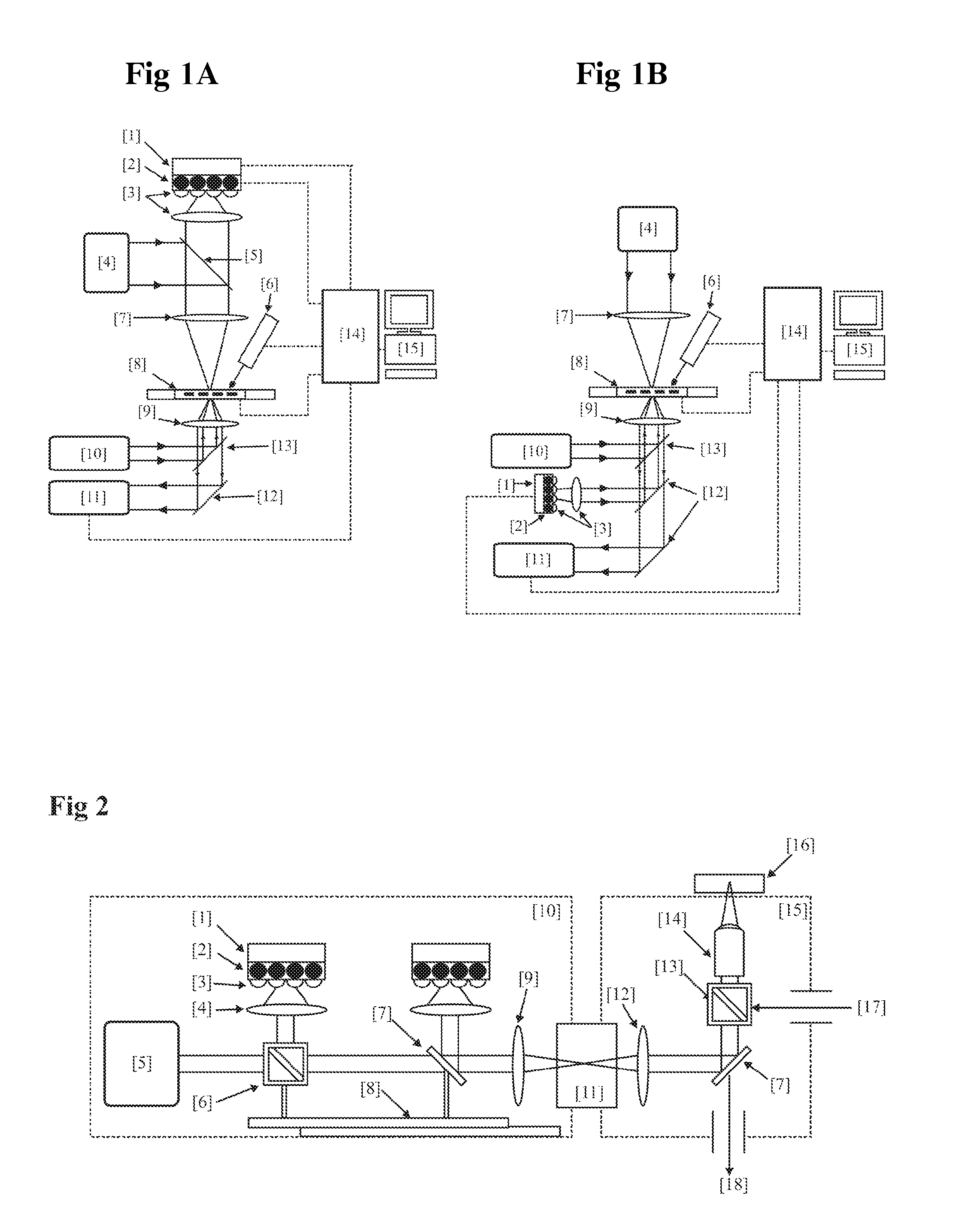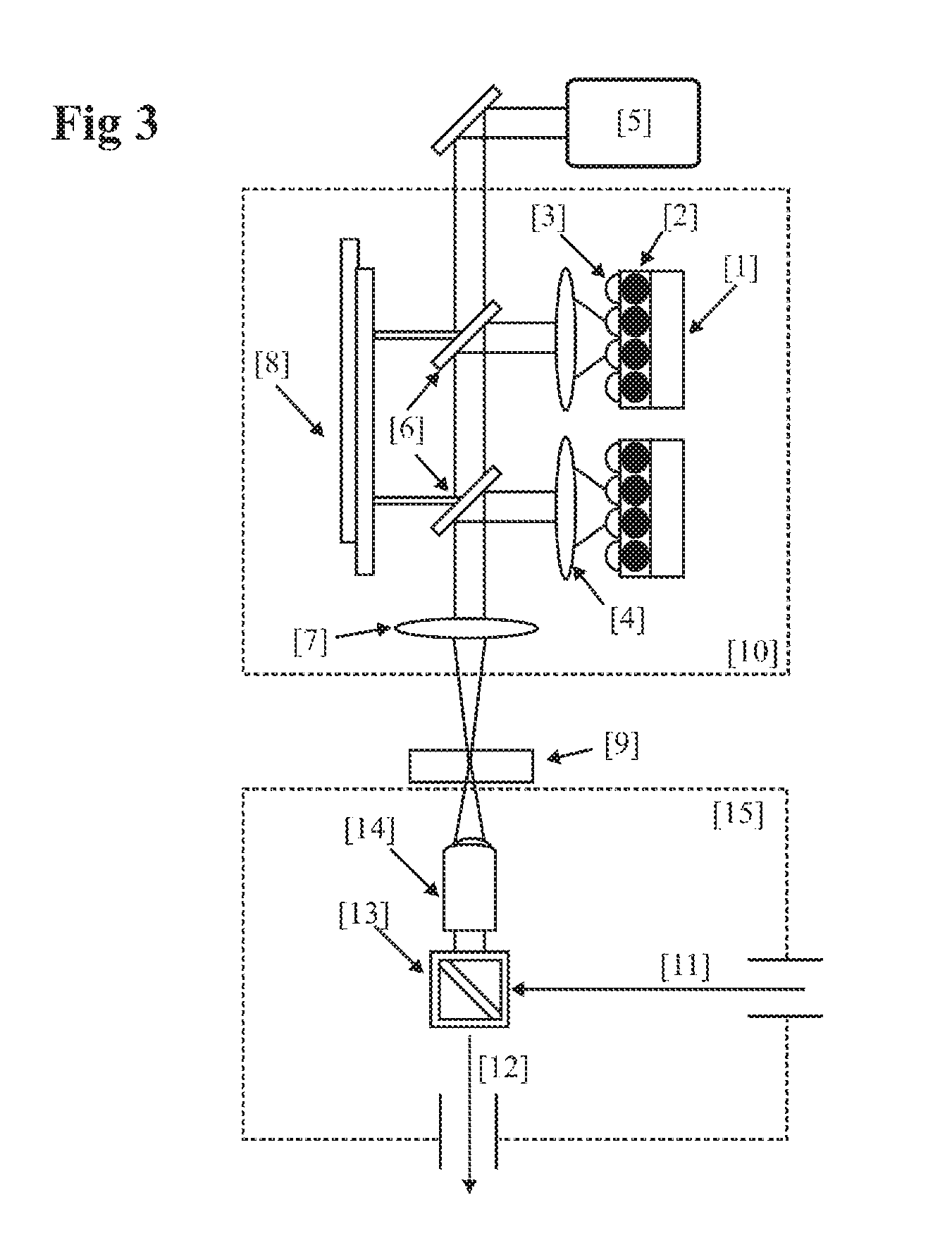Optical stimulation of photosensitized cells
a technology of photosensitized cells and optical stimulation, which is applied in the field of optical stimulation of light sensitized cells, can solve the problems of limited stimulation spatial resolution, possible electrical excitation of action potentials, and potential excitation of neurons within the vicinity of the stimulation electrode, etc., and achieves maximum efficacy, easy bonding, and increased fill factor
- Summary
- Abstract
- Description
- Claims
- Application Information
AI Technical Summary
Benefits of technology
Problems solved by technology
Method used
Image
Examples
example
Photo-Stimulation of Neurons
[0068]In order to use micro-LED array devices for photo-stimulation and simultaneous electrical recording of nerve cells the system shown schematically in FIG. 1 can be used. The system is constructed around an inverted microscope for sample imaging and alignment. The MEA system is mounted on the stage of this microscope and the photo-stimulation is provided by mounting the LED array and projection optics in a trans-illumination position above the stage. Ancillary electronics including LED driver and MEA instrumentation are controlled by a computer, which can adjust the stimulation and record the nerve cell response as required. Commercially available MEA recording systems typically consist of a matrix of Indium Tin Oxide electrodes on a glass substrate, coated with Titanium Nitride at the stimulation / recording points. Non-stimulating areas are passivated with silicon nitride. The array is thus fairly transparent to both trans-illuminated and epi-illumina...
PUM
 Login to View More
Login to View More Abstract
Description
Claims
Application Information
 Login to View More
Login to View More - R&D
- Intellectual Property
- Life Sciences
- Materials
- Tech Scout
- Unparalleled Data Quality
- Higher Quality Content
- 60% Fewer Hallucinations
Browse by: Latest US Patents, China's latest patents, Technical Efficacy Thesaurus, Application Domain, Technology Topic, Popular Technical Reports.
© 2025 PatSnap. All rights reserved.Legal|Privacy policy|Modern Slavery Act Transparency Statement|Sitemap|About US| Contact US: help@patsnap.com



